Resistant Ventriloquism and Postcolonial Courtesy
Nabra Nelson: Salam Alaikum. Welcome to Kunafa and Shay, a podcast produced for HowlRound Theatre Commons, a free and open platform for theatremakers worldwide. Kunafa and Shay discusses and analyzes contemporary and historical Middle Eastern and North African, or MENA, and SWANA, or Southwest Asian North African theatre from across the region.
Marina Johnson: I am Marina.
Nabra: And I’m Nabra.
Marina: And we’re your hosts.
Nabra: Our name, Kunafa and Shay, invites you into the discussion in the best way we know how, with complex and delicious sweets like kunafa and perfectly warm tea or, in Arabic, shay.
Marina: Kunafa and Shay is a place to share experiences, ideas, and sometimes to engage with our differences. In each country and Arab world, you’ll find kunafa made differently. In that way, we also lean into the diversity, complexity and robust flavors of MENA and SWANA theatre. We bring our own perspectives, research, and special guests in order to start a dialogue and encourage further learning and discussion.
Nabra: In our fourth season, we focus on classical and historical theatre, including discussions of traditional theatre forms and in-depth analysis of some of the oldest and most significant classical plays from 1300 BC to the twentieth century.
Marina: Yalla, grab your tea, the shay is just right.
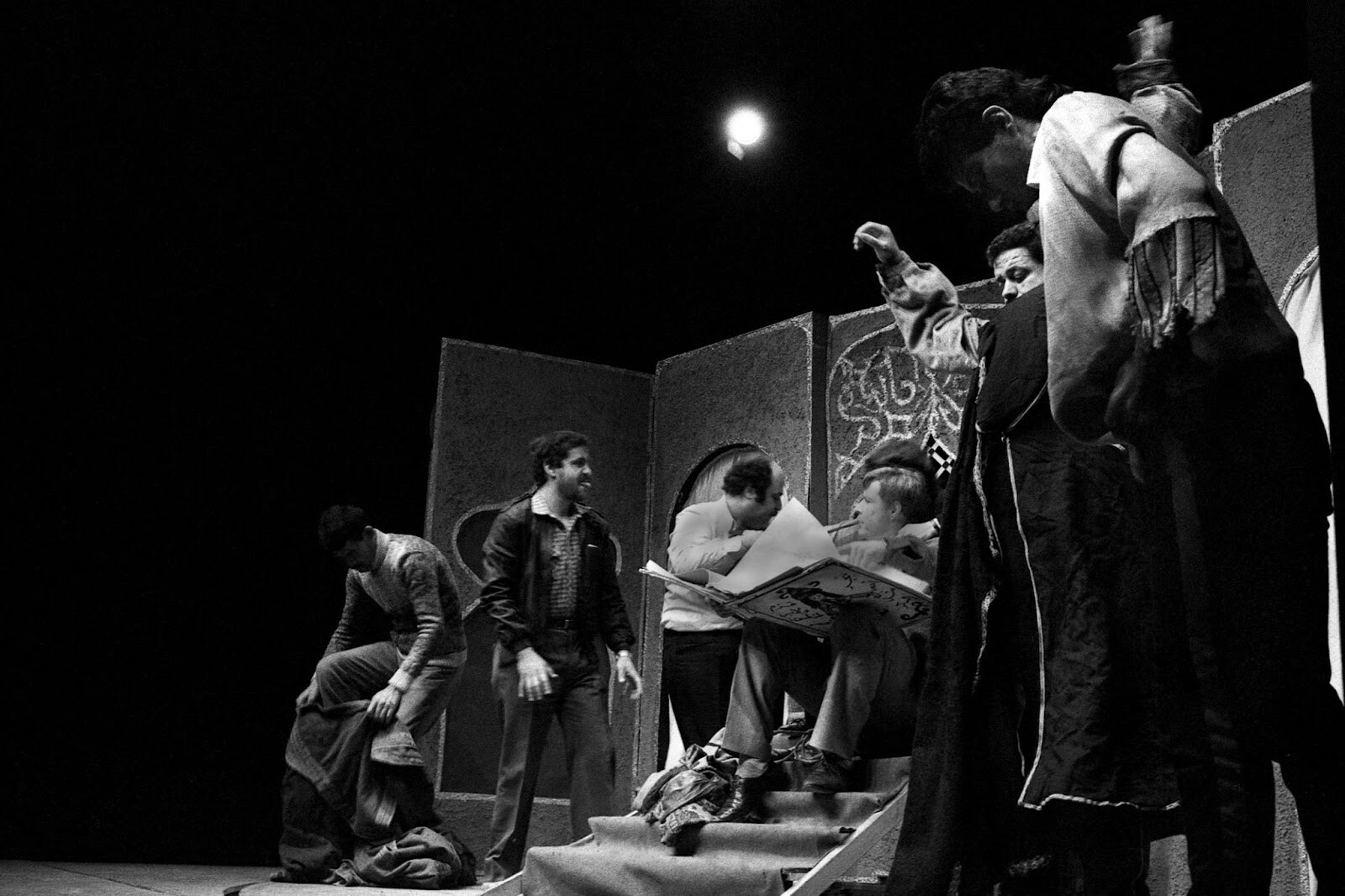
Image from the Palestinian Museum Digital Archive. Photo by Joss Dray
In this episode, we continue our conversations around theatre history with Dr. Samer Al-Saber for a conversation around resistant ventriloquism and postcolonial courtesy. It is always special for me to be in conversation with Samer because he’s both my PhD advisor and one of my favorite human beings on the planet.
Nabra: So, here’s a quick bio. Samer is an assistant professor of theatre and performance studies at Stanford, and a member of the faculty at the Center for Comparative Studies in Race and Ethnicity and the Abbasi Program in Islamic Studies.
Before coming to Stanford, he taught at various institutions including Davidson College and Florida State University on a wide range of topics, including conflict and theatre, Arab theatre and culture, Palestinian theatre, performing Arabs, staging Islam and American politics, and orientalism. At Stanford, he teaches courses concerned with race, identity, and ethnicity at the intersection of Islam and the arts. His international research is focused on the cultural dimensions of the Arab world, the Middle East, and Islamic regions. As an artist-scholar, his fieldwork intersects with theatre practice as a director and writer.
Recently, Samer directed Returning to Haifa at Golden Thread Productions and had the world premiere Decolonizing Sarah, a play that he wrote and directed himself, at Uprising Theatre in Chicago. Samer, it’s so wonderful to have you with us today.
Dr. Samer Al-Saber: It’s a pleasure to be here.
Marina: First, we wanted to talk about your article, “Jerusalem’s Roses and Jasmine: A Resistant Ventriloquism Against a Racialized Orientalism.” This article talks about a play that the Palestinian National Theatre did in 2015 called Roses and Jasmine, which had Palestinians performing a Jewish majority story on both Palestinian and world stages. This was certainly not a common occurrence, and your article analyzes the choices made in this production, arguing that it reverses orientalist ventriloquism as a means of resistance. There’s a lot to dig into in this article, but maybe we can start by just having you describe a little bit of that production with us.
Samer: Sure thing. It’s a beautiful production, written and directed by Adel Hakim, actually co-written and directed by Adel Hakim. And Adel Hakim passed away a few years ago, and that was the last production he did. He regularly directed plays in Palestine, particularly at El-Hakawati, the Palestinian National Theatre, and he wanted to adapt Antigone. He had directed Antigone a couple years earlier, and the production was so successful.
And then he wanted to do something that basically he talks about the Palestinian experience using Palestinian characters. And so he did a sort of an Antigone adaptation, and Jasmine and Roses was, in fact, that. And the story follows three generations of Palestinian and Jewish characters that become Palestinian refugees and Jewish Israeli characters.
And so you start the first act with the British mandate and characters falling in love in the midst of a time of war. And then by the second act, the state of Israel is created. And by the third act, a third generation of characters, young generations who basically are serving in the army, living in Palestine as protestors, demonstrators, fighters on some level.
So we get the exile of Palestinians in the second generation, and we get the resistance from within Palestine in the third generation. The key to this production is that two sisters, one Israeli Jewish and one Palestinian, have grown up separately in different places. And by the end of the play, they have to encounter each other one as an incarcerated fedayeen, a resistance fighter, and one as an Israeli soldier.
And that leads to a kind of an agnosis in the kind of a Greek theatre sense where there’s this realization that these two characters are, in fact, family. But they are in two separate positions of power. So what you get is characters or Jewish characters played by Palestinians. And because the play begins with the Holocaust happening during the British mandate era in Palestine, of course, happening in Europe but during that period, we see Jewish characters arriving as refugees.
And these characters are played by Palestinian actors with such kindness and faithfulness that it asked the question, “Why would Palestinians do this? Why would Palestinians tell the story of the Holocaust in a sort of loose adaptation of Antigone in Palestine to Palestinian audiences?” And that intrigued me and led to my wanting to write an article about it. So that gives you an overview of the play and why I wanted to write about it.
Marina: Definitely. So let’s talk about the idea of ventriloquist characters then, which is a term I believe you take from Edward Said and then build upon. So you write that quote, “Ventriloquizing an oppressive colonial structure, not in mockery, but an earnest sympathy for the purpose of revealing it, constitutes an actual reversal of the orientalist aesthetic in dialogue,” end quote. Can you expand upon that here? And you just talked about the earnest sympathy, but I’m curious more about how did Roses and Jasmine do this as a production?
They are limited—all this kind of grotesque orientalist motifs. But then what if I take that aesthetic and that motif and ventriloquize it for the purpose of putting up a mirror?
Samer: So Edward Said in Orientalism, the word “ventriloquism” comes a couple of times, and I was intrigued by that, that he would write about a sort of ventriloquizing of Arab existence, aesthetics, characters, but not in earnest, meaning that the ventriloquism is created through an orientalist filter and fantasy. And it is meant to really reveal something about the West, for the West and for the consumption of the West.
And in that sense, the ventriloquism is not an honest one. It is seen through a particular filter, and he does not develop that idea within the book. But I saw it throughout the book as a recurring motif. And so then I realized that whenever as a performer you are trying to capture a certain reality or realism or naturalism about another character, there is a sort of ventriloquism that you try to achieve that basically without the audience knowing that you are doing it, you are uttering the words of those people or those characters, these types of humans.
Now, that could be done for a higher purpose that is actually good for us all, or it could be done in a negative way. So an example of a ventriloquism that I would say is not a resistant one in the sense that I was attempting to describe is that you could get John Stewart on his comedy show ventriloquizing something that Donald Trump said. But the purpose of it is mockery, right? It’s naked.
It’s in front of you. This is what he’s doing. It helps us know what his subject position is as a contrarian and helps us understand what Trump’s position is as somebody who is on an opposing political camp. In orientalist ventriloquism, I suggest that that ventriloquism is actually potentially done with ignorance. I don’t want to say in earnest with ignorance, but the purpose at the end of the day is always to establish white supremacy that we are better than them. There is an us and them. They are this old culture. They are limited—all this kind of grotesque orientalist motifs. But then what if I take that aesthetic and that motif and ventriloquize it for the purpose of putting up a mirror? So the orientalist can actually see me doing them, kind of like the white person watching the cakewalk, knowing that it is a mockery of them. That turns into something of a moment of realization of like, “Oh, this is how they see me. I must be doing something wrong.” That could lead to a realization.
And then I thought, “Okay. What if it’s done in earnest, not in mockery, right?” This is not I want to show you yourself how ridiculous you are. What if it’s I want to show you that I completely understand you, that as a human being, I understand your suffering.
And as a result, that resistant ventriloquism of showing you that I see your argument, I see your suffering, I see your humanity, I see everything about you, and I present that to you as a token to say, “Look, now that I show you that I understand you, can you do that for me?”
And in that sense, it becomes a resistant ventriloquism where, in fact, I ventriloquize you honestly in hopes that you will see me for who I am, because ultimately, most oppressed classes, most people who are suffering actually tend to understand the arguments, the discourse, the realities of the supremacist regimes that they are suffering under.
They understand the tax system of a feudal society and the power of a king in a medieval religious dynastic realm, et cetera. People understand what they’re dealing with when it comes to a powerful regime. But very often, those regimes don’t understand them. And so that was a point of departure of basically rendering the powerful into a position where they have to demonstrate understanding for you and sympathy for you because you are openly showing them that you fully understand. Yeah. So that’s what that’s about. Yeah.
Marina: You describe it so skillfully. And in the article itself, which I’m hoping that people listening– we will certainly link a place where they can find it–but you talk about how the actors approached from an audience or an actor perspective, but not everyone was initially on board or even finally on board necessarily because sometimes I think, and correct me if I’m wrong, but when you are doing this work and doing it in a way that is earnest, not everyone wants to give that token as you called it.
But I’m curious if you can speak more to, especially because you were there, and you were witnessing the production, but also in conversation with actors and audience members, if you can speak to more of what the mixed feelings were on having this approach.
Samer: It’s a very controversial choice to do something like that, because it puts the burden on those who are suffering to demonstrate the suffering of their oppressors. And so when the majority popular culture sees it, they say, “Why are we spending our sizable emotions but our limited resources to tell the narrative of the oppressor? Why would we do that?”
I mean, we have our own struggle and our own resistance. And so the production itself created controversy for that reason because so much resources, an entire act out of a three-act play was dedicated to demonstrating a Palestinian wholehearted understanding of the Holocaust, the power of Zionism during that period, its connection to Europe, et cetera.
And so there’s something particularly in Jerusalem that is really at the forefront of a lot of Israeli practices, cultural, political, and so on. It was a rejected approach by many of the audience members.
But then some said, “No, we need to be able to demonstrate how we understand this narrative and that narrative actually should not give the right to the people who suffered to ignore our suffering or further aggravate our suffering or to control our lives and affect our destiny and self-determination.”
And so in a way, it became the play and the discussions with the audience and around the audience and with the actors demonstrated that theatre as a forum can be a very eclectic place for making an argument, but also a very combative place when it comes to an issue like the Palestinian identity and the resources of Palestinian theatre and Palestinian life, and the time that actors put in and the audience put in.
Of interest, the actors who perform these roles are beloved actors who are well known in the community. Their commitment Palestine is beyond reproach. And they felt that by doing this, they demonstrated that the argument that Palestinians have a psychological problem with Israel or with the Jewish people or that narratives of Jewish history and the Holocaust are not believed within the Palestinian life, all these ideas that are commonly pedaled in order to justify occupation, they felt it was important to be able to debunk them.
And so that act showing how much the Palestinians understand this part of Jewish life was really essential. And it became obvious when Jewish audience members in France and in various European cities saw the play. They thought it strange how Palestinians could fully understand Jewish European suffering in the Holocaust.
And that allowed for grounding of sympathy in a way that Palestinian audiences, not all of them, saw that as something that would actually happen. And it did it. So key to understanding the controversy around that play at that time is that Adel Hakim, the team, the theatre produced this play with audiences abroad being in mind as well as audiences in Jerusalem also being in mind. And so it wasn’t a play that is exclusively created for Jerusalem. It was a play that was created for Jerusalem by Jerusalemite, but also with the purpose of traveling abroad.
Nabra: That’s so interesting and so carefully crafted as well, the application of this idea of resistant ventriloquism. I’m wondering if you can talk perhaps more broadly about that term, how perhaps it’s been applied elsewhere or how people listening might apply this term in their own theatre research or theatre history classes in other situations, since this one is just so specific and so clearly curated for the impact that you are talking about.
Oppressors hate hearing themselves, especially through bodies that they hate.
Samer: It’s an idea that could be done in everyday life quite easily, but also in playwriting, in interpreting certain plays. I’ll give you the example of Hamilton. Hamilton is entirely a ventriloquism. You take white American history, and you have Black performers ventriloquize.
However, its problem is that it is not a resistant ventriloquism. That ventriloquism actually takes the burden of the white master narrative and lays it or superposes it on Black bodies. Now, if there had been moments where you might call it alienation or Brechtian moments or moments of just open activism within the play, within the music, within the acting that reveal the ridiculousness of the master narrative, then it becomes a resistant ventriloquism for Black actors in Hamilton to show how they fully understand in sympathy and in earnest that they do understand the white narrative and where it comes from and the founding of America and so on with full buying in, but then pulling the rug from under the audience and making a statement about the ridiculousness of that narrative.
That’s when it becomes a resistant ventriloquism. I mean, it exists to a certain degree, and Hamilton is one of them. As a playwright, you can think about it in terms of foundational technique in theatre making where you have dialogue typically in theatre is conflictual on some level, right? For the dialogue to work, you have to have opposing points of view within characters, different wants and objectives, different subtext and so on. But then if it’s entirely conflictual, then you get really good drama, well-structured drama.
But if you create resistant ventriloquism within that, then what you can do is you can decode or unvault or open up a layer that is often rarely used in theatre. That is you can have characters repeat each other’s sentences, play each other in different times in a play or in a scene.
And by doing so, kind of change each other’s perspectives and positionalities often, particularly in common technique of playwriting and realism in American theatre. The wants of the characters rarely change. Their subject positions rarely change throughout plays. Most characters really are something and they stay the same by the end. You might have a protagonist that experiences transformation of some kind, but often their subject positions don’t really change. With resistant ventriloquism, you could basically upend subject positions in a character’s journey quite easily, and you can do it in multiple characters. So that’s one way to do it. The best example of a resistant ventriloquism that I have seen recently is Bassem Youssef doing that interview with, I forget his name, the British guy.
Marina: Piers Morgan.
Samer: Piers Morgan, where Piers Morgan would say something about terrorism, “What should we do with the Palestinians?” And Bassem Youssef is like, “Kill them all. Let’s just kill them.” And you know that Bassem Youssef does not feel that way. But by ventriloquizing him, he is really putting up the mirror and doing that opposite thing of not creating sympathy but taking on the subject position. So Pierce Morgan can see to the point where Morgan has to say to him like, “Can we get serious,” because as soon as you start arguing with yourself and hearing yourself, you realize how ridiculous you are. And so in that way, that resistant ventriloquism works quite well.
Marina: Oh my gosh, Samer, I so appreciate it. I mean, I think that many people listening will be like, “Oh, that’s what makes me feel funny about Hamilton, oh, that’s why the Bassem Youssef interviews really were striking such chords with people because it did feel like these major acts of resistance, which usually going on Piers Morgan does not feel like.”
And so I just appreciate having this term. And also, I think this is a great example of how sometimes people think theory or coining these terms doesn’t speak to the general public. It doesn’t speak to what’s happening in the world. And the examples you gave and your article itself really point to how you can use these as forms of resistance in a world where we really need these forms of resistance.
Samer: Oppressors hate hearing themselves, especially through bodies that they hate.
Marina: Yeah. No. It makes perfect sense. But yeah. Well, I want to switch from resistant ventriloquism, which is a term that I love that you coined here, to a different term, but I’ll give a little intro for those listening.
But two years ago, I had the pleasure of being your teaching assistant for the class you taught in Jordan called History, Urbanity and Performance in the Middle East. And when we were in Jordan, you were finishing up an article. So it was really exciting to walk around Jerash, which is known for being one of the largest and most well-preserved sites of Roman architecture in the world outside of Italy, knowing that you were thinking deeply about its history and how the site itself has performed across time. So we’ll talk a little bit about the term maybe in a minute, but I would love to know if you can share a little bit about what’s covered in this article.
Samer: Yeah. So this article for me is basically one of those projects that started a long time ago, and I was basically waiting for the world to be ready for it because there was no point of publishing something that folks would feel like it doesn’t make sense or it’s out of place and so on.
So in my undergrad, I studied in theatre history that the Middle East and the Muslim majority countries don’t have theatre because Islam banned human representation. And I think the third or fourth edition of the—bracket that, maybe the second, I don’t remember—but it was in the mid-nineties, did not actually had a very small section on theatre in Islam, and it was all about censorship, religious censorship, which was running against everything I had known as a person growing up in Arab societies and culture, seeing theatre everywhere and seeing people being very theatrical and going to Jerash a kid and jumping on those ruins and playing around and seeing concerts.
And it’s like, I don’t really understand this. And so when I started the project, the predominant belief within the theatre scholarly community that Islam or Islamic cultures and Arab cultures have had limited exposure to theatre, and the majority of their theatre is either shadow puppetry or kind of a Western-inspired theatre that is only a 100-, 150-years-old was the common argument and discussion. And therefore, in global theatre histories, there was no such thing as the theatre of the Middle East in, I would say, nine out of ten theatre programs.
So that’s the point of departure of this article of me saying, “Well, I’ve seen the theatre of theatres with my own eyes.” They are theatres of antiquity. They look like all the theatres that my antiquities professors were teaching me Greek tragedies from, telling me all these great things about how these theatres operate.
I’ve seen them everywhere in the Middle East. How come none of these professors imagined a Bedouin walking on the stage and saying something to a bunch of people? So they passed by those theatres, and they were like, “Oh, I don’t see it.” It’s kind of like white people saying, I don’t see color.” It is like, “Oh, I don’t see it’s there, but I don’t see it. Is that what it is? Is that what they imagine?” The truth is, there is a lively tradition of poetry performance, very much like the Homeric odes.
There is a huge tradition of storytelling like Greek mythologies. The concept of tragedy is extant in historically pre-Islam and post-Islam throughout Arab regions. The pagan heritage of the Greeks and Romans existed in the peninsula worshiping through statues that represent deities and so on, the kind of Dionysian festivals of wine and fertility and theatre. There were similar festivals in the Hauran throughout the peninsula with wine and deities and so on, gatherings and markets and recitations of stories and poetry.
So why is it that theatre has been and continues to be in many places, to be told as a story of a form that came out of Athens, not anywhere else in the world? So that was my point of departure, and I thought, “Okay. Well, the Pharaoh’s pharaonic culture is acknowledged. The Isis and Osiris myths was acknowledged, thank God. But then those people who acknowledge it will tell you, “Well, but you have to know modern day Egyptians are not the same Egyptians who built the pyramids.
There’s a kind of differentiation of like, “No, no, no. It’s not the same people.” The Muslim peoples pre-Islam are not the same people who are after Islam because Islam destroyed everything. There is a kind of constant diminution and reduction of Arab and Muslim societies in these circles. And so I start to ask the question, “Well, what could it be like?”
And so I started to study these theatres, and then I landed on Jerash, a city that is part of a league of ten cities called the Decapolis. And I was finishing that article. And during our last visit when we did the study abroad program, after having visited it repeatedly over the years, walking through it and asking the question of like, “Well, if I were an Arab from back then and I walk into the city, what do I think?” And that as a methodology when it comes to the studies of antiquity is typically unaccepted.
It’s like, “Well, where is the evidence?” Well, the evidence is everyday life anthropology, human being on two legs, walking on a stone road. Romans did not come from Rome with their stones and put up this theatre or the city or these columns. It was the people who lived there. And so that was the point of departure.
And basically once you start a project like that, you start asking the questions and looking for answers. While the scripts are there, we have the mulaqat. We have all kinds of stories that have been around for a very long time within the peninsula that we’re told using oral traditions. The Qur’an itself is a dialogic text. It’s God speaking to the prophet, solving problems about Muslim life.
That’s the whole idea of the Qur’an. It’s a dialogic text that then gets shared to others and initially orally and then gets written down. And so the whole thing of not having the scripts, the buildings not being ours, and then the idea that the pre-Islamic Arabs did not even have the desire to imitate. It’s like, “Okay, fine.” It took us until 1850 to imitate Western theatre. How ridiculous is that, the idea that it took us this long to imitate theatre? If theatre was so great, not a single Arab wanted to do that. That’s kind of strange. And so that’s what the article is about, is showing what the possibilities are for researching and narrating a potential history of Arab theatre pre-Islam.
Marina: Yes. And in the article, you coined the phrase “postcolonial courtesy,” which I understand as a defense against a certain white classicism that’s prevalent in theatre history. And you’ve really told us a lot about the thought process of this article. And I can see exactly how this term fits in, but perhaps you can expand upon the term because we already see it being done in other places in theatre history as well.
Samer: Yeah. So I noticed early on in my scholarly career that when folks read my work without knowing it’s me, they think it’s brilliant. But as soon as they know it’s me, it becomes uninteresting. That’s a kind of racism.
Another kind of racism that I’ve often experienced is that when they read it in its initial form—we all have pre-publication drafts and so on—its initial form, they have all kinds of objections that are like, “You tell them I’m writing a piece about Earth. They give you reasons why it’s wrong based on the physics in Mars.” And you’re like, “I wasn’t writing about Mars. I’m writing on Earth.”
And so reasons come up all the time. But then there was a phenomenon that I experienced, which is when I presented at a conference and they hear it through my kind of way of communicating vocabularies that are communicated directly to them with my voice, with control over the ideas at a conference at a podium, they seem to be more convinced. And what I realized is that to my face, often those listening have a hard time debunking my argument.
They have to feel that they are away from me doing all kinds of crazy homework to try to do debunk where debunking is the purpose as opposed to learning being the purpose. So with postcolonial courtesy, I wanted to start this article with this idea of asking all these people who are looking for reasons to hate, who are looking for reasons to be better, who are looking for reasons not to learn, who are looking for reason to reduce me to just say, “Could you please... We live in a postcolonial world where we recognize that there were Indigenous people in the Americas before Christopher Columbus. Can we please imagine that there are Indigenous Arabs in the peninsula that actually have brains?”
Is that possible in a postcolonial world? May I have the courtesy of you reading this without seeking to debunk me or reduce me? That is basically the purpose of that idea. And it comes from a long history of, I’ve been within academia for about good twenty years, a long history of just seeing folks wanting to be experts by not being in dialogue with me, but rather by reducing me as a scholar. And so I just request a basic courtesy during this postcolonial era of saying, “Hey, we have upended a lot of knowledges based on racist epistemologies. Can we do that one more time together? Could you please listen to me without trying to be supremacist or supreme or superior?”
Marina: Yeah. Well, and I think what you’re talking about too, we see this courtesy that’s extended to different things. Nabra and I are doing this season on theatre history, but there are Egyptian, like the Ikhernofret Stela, which is in Egypt, but it’s a few pieces of text on the wall. And people say, “This is very early theatre.”
But then that same courtesy is not extended outside of that time period, outside of Egypt and different places in the Arab world, and then the peninsula. And so we see this courtesy being extended in colonial ways, but we don’t see it being extended in this postcolonial world. So I really appreciate you sharing that all with us because I’m sure people listening to can, I mean, I hope not, of course, but I understand what academia is like often when people are trying to make contributions as you are in fields that are not used to listening and actually are used to having a canon and an ideology that reigns supreme.
Nabra: And honestly, you’re just not used to courtesy, which is so interesting. I mean, it’s interesting that you even need to coin a phrase of postcolonial courtesy that’s simply really, you said it, but also danced around it, that it’s just racism and a lack of courtesy by itself. So it’s just such an interesting way to approach it through scholarship. Really through. In a way it also reminds me of the approach of this resistant ventriloquism is approaching it through from an insider perspective in order to bring a sense of resistance and some type of lasting–
Samer: That’s it. At the end of the day, we basically have to find tricks and tactics to get the person in front of us to just listen to us the way they listen to their white friend or white colleague or white student and so on, to look at our achievements the way they look at, again, our artists, colleagues and peers who are white.
And the idea that we have to do ten times more and demonstrate ten times the excellence to get half or quarter what our white colleagues get without ever hardly trying has become a way of life. And the resistant ventriloquism sometimes is a way to do that. Sometimes a request for postcolonial courtesy is a way to do that. But if this racism didn’t exist in the first place, and if we didn’t experience it so much every day, we wouldn’t be coming up with all these tactics and strategies of just saying, “Please, please, please, please just see me for what I am and who I am.”
In the absence of a vacuum of power within Palestinian society at the time, immediately after the occupation, they wanted to reach each other and do work together.
Nabra: And part of that, of course, is documenting these histories and bringing them into a scholarship and Western scholarship as well. And there’s so much to chew on that you’ve talked about and really also a great way to frame, I think, this season as a whole thinking about theatre history.
But we want to end by talking about your book and where you write about the history of the Palestinian Theatre Group, El-Hakawati in Jerusalem. And we are talking about the history of Palestinian theatre in El-Hakawati as a more broad concept in another episode this season. But I know you can’t summarize your whole book right now, but can you give us a preview of what we might learn in this text and also any other exciting projects that you’re working on now that we can look forward to?
Samer: So the book is tentatively titled A Movement’s Promise, and it tracks the movement of Palestinian youth in the early seventies after the 1967 war and the events of Black September where so many Palestinians were killed. They felt a certain paralysis and wanted to... In the absence of a vacuum of power within Palestinian society at the time, immediately after the occupation, they wanted to reach each other and do work together.
And theatre was a great medium because what it requires is the ability to tell story or the desire to tell stories and to be in community with each other. And so, although assembly typically was banned by law, by military law at the time, they found ways of connecting through the YMCA, through various private organizations and familial circumstances. That group of people would create so many theatre companies and have so many political viewpoints and ideologies, all nationalists in some sense, in terms of desire for Palestinian self-determination.
But at the end of the day, some were communists. Some were leftist various kinds. Some sympathized with the popular front, others with Fatih, others with different factions. And that group of people, their theatrical productivity increases over time throughout the seventies. And at some point, a company called El-Hakawati emerges that is essentially a natural extension of many of these companies.
And parallel to it, other companies emerge doing also their own theatrical ventures, but in different ways. Al-Kasaba’s George Ibrahim does amazing work that is parallel to El-Hakawati. The People’s Theatre Sinabal does a whole bunch of amazing work. And so all that leads to what they refer to as “the theatre movement.” The theatre movement ends up having this a highly productive period in the late seventies. El-Hakawati becomes the leading company, and they end up founding, creating this theatre in an old burned-out cinema where they go in and fix it up.
I mean, if you see photos of this thing, it is absolute destruction. It had rockets thrown on it. It was burned. I mean, it was just a vandalized, destroyed place. And they turn it after six to eight months of work into a premier theatre venue that continues to survive till today. They just celebrated their fortieth anniversary. And so El-Hakawati and the theatre movement ends up creating this beautiful home that becomes a center of cultural production, and the eighties end up being this very productive period, having more theatre produced in that city than any other time in history.
And then some internal disagreements happen after the intifada, when there was a real promise of the creation of a Palestinian state. And it becomes a really complicated question as to whether this theatre will remain as it is led by El-Hakawati Theatre Company or it’ll be taken over by a board, and it becomes, therefore, the nucleus of a potential national theatre for the Palestinian state that was supposed to be established with Jerusalem as its capital in the Oslo Accords of 1993.
And so El-Hakawati is given the choice to either remain as the head of this organization and take responsibility for all its financial costs or to leave it. They were artists. And the relationship between administration and artists is always complicated in the theatre, and I’m simplifying how they exited, but they ended up exiting the theatre, and it was taken over by a board that has sustained it in some fashion since that time.
However, the Palestinian state never came to fruition. Oslo ended up creating all kinds of problems. And instead of the promised nineties of a Palestine with a self-determination and a ministry of culture and with a vibrant Jerusalem that had all kinds of performances in dance, poetry, theatre, et cetera, music in El-Hakawati Theatre, it ends up being that this theatre is surrounded by checkpoints and lack of access. The rest of the West Bank cannot go there, and it ends up being in a status quo, a kind of no man’s land.
And so that’s essentially how the book ends of at this period when the movements promised does not come to fruition, what is the future of that theatre? So that’s the book. Of course, part two of the book would be the next phase that Palestinian Theatre enters, which is, say, ’93, ’95 until now, which is a period of NGOs and internationalism and international funding, and all kinds of crises that include the second intifada and all the bombings against Gaza for the last twenty years and so on. So that would be part two if we were to have one. Yeah.
Nabra: Well, I really hope there is also a part two, so we’re looking forward to both parts and so thankful for this entire conversation. There’s so much to chew on, so much to think about, and so much, also, I think, for us and our listeners to look more into and to especially read. You’ve given us a real reading list of your articles here that we’re very excited about. So thank you so much, Samer, for joining us today. It’s so grateful to have you here and so thought-provoking.
Marina: Always. Thank you, Samer.
Samer: It’s a pleasure. Thank you for inviting me.
Marina: This podcast is produced as a contribution to HowlRound Theatre Commons. You can find more episodes of Kunafa and Shay and other HowlRound podcasts by searching “HowlRound” wherever you find podcasts. If you loved this podcast, please post a rating and write a review on your platform of choice. This helps other people find us.
You can also find a transcript for this episode along with a lot of other progressive and disruptive content on the howlround.com website. Have an idea for an exciting podcast essay or TV event the theatre community needs to hear? Visit howlround.com, and contribute your ideas to the Commons. Yalla, bye.
Nabra: Yalla, bye.

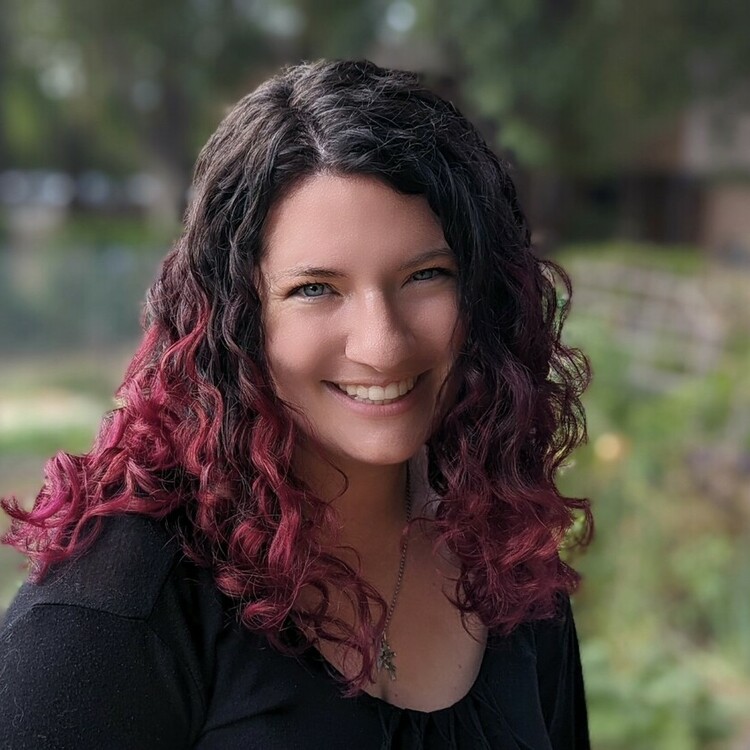
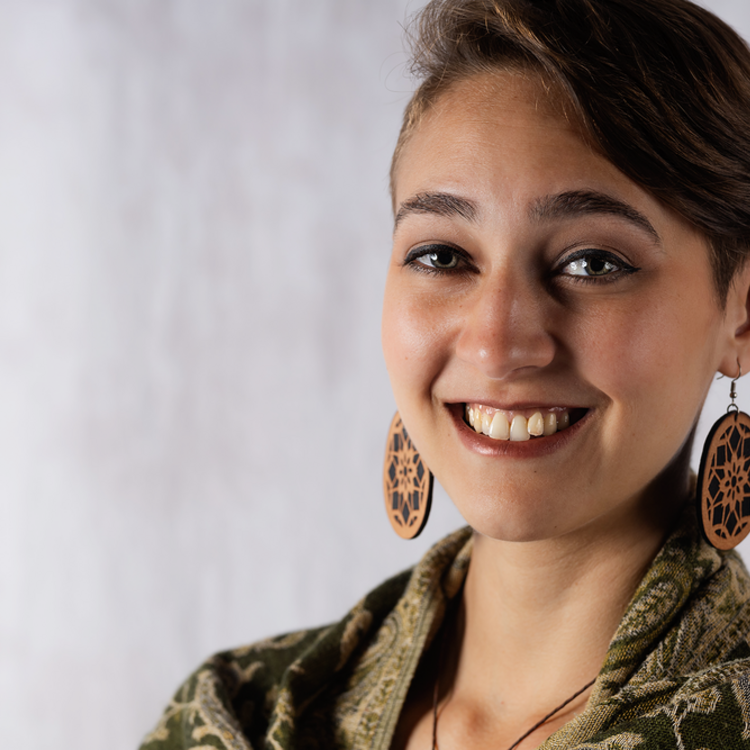
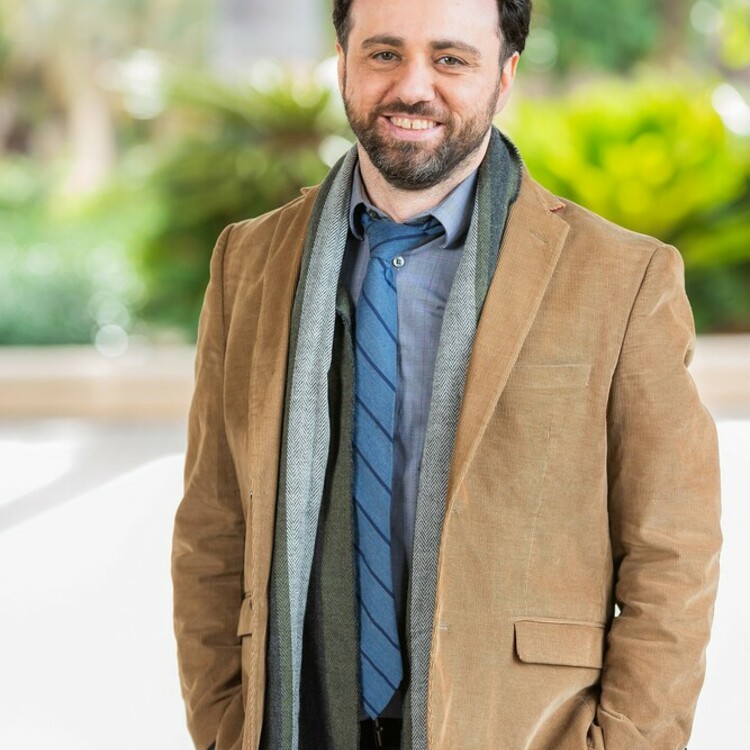
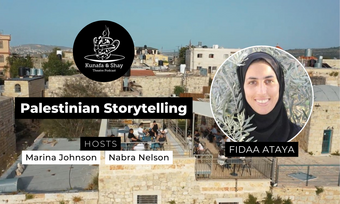



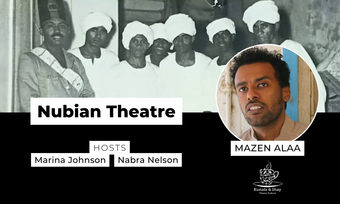

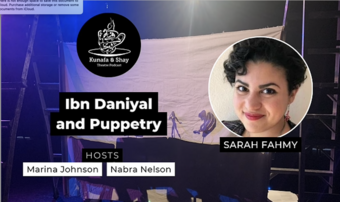

Comments
The article is just the start of the conversation—we want to know what you think about this subject, too! HowlRound is a space for knowledge-sharing, and we welcome spirited, thoughtful, and on-topic dialogue. Find our full comments policy here